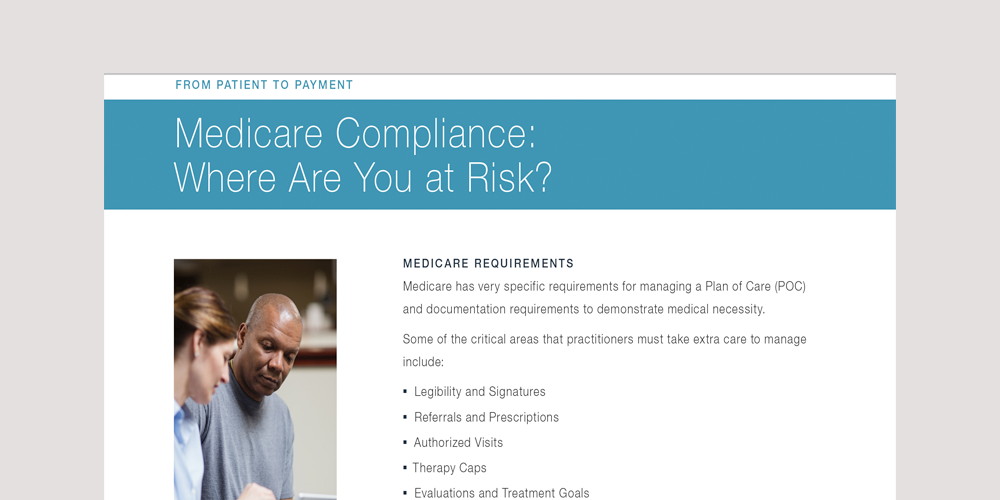I’m often asked what the foundation of Medicare compliance is, and my answer might surprise you. Documentation comes to mind, as it is an essential element of compliance, but the Office of Inspector General suggests there are a number of things you can do to demonstrate your commitment to compliance.
Here are my top three steps for anyone who is scaling up a compliance program if they can’t get one fully on board right away:
#1: Ensure no one in your workforce has been excluded from participation in a federal health care program
You need to be confident that before you treat a patient and submit a claim, you have verified everybody, and continue to do so on a monthly basis. It is important to make sure you haven’t hired someone who’s excluded from participating in federal health care programs including Medicare, Medicaid, and Tricare. This can be done easily at the OIG.hhs.gov website, where you can enter your employees’ names in the list of excluded individuals and entities, as well as query the 37 different Medicaid databases to ensure you do not have an excluded individual in your workforce. My work this year has involved a number of instances where a client has sought to employ somebody and through a background screening check, we determined they had been excluded or were traveling the pathway to exclusion due to a license sanction and a mandatory reporting requirement to the OIG.

Worried you aren't Medicare compliant? Download our tip sheet to help you document medical necessity, avoid denials and fines, and more.
Download Now#2: Education and training
There should be an expectation that you and all of your employees understand the requirements for participation in Medicare and billing, coding, and documentation. Everyone on your staff should know how to prevent fraud and abuse, and understand the expectation for the rules. Every rehab case the OIG has published has indicated “problems” happen because people don’t understand the rules and requirements of how to bill federal health care programs. Personally, I love the work associated with training and education. You need to ask yourself whether you have fully briefed your employees on the rules. Your employees may come from a skilled nursing facility, a home health agency, or fresh out of school without enough real application knowledge. Your employer, the private practice that hires you, should train you, as the therapist, on the expectations of compliance with the relevant rules for your site of practice.
#3: Have an effective auditing and monitoring program
Before you submit your final claim on an episode of care, you want to ensure the plan of care has been certified known as a concurrent activity. Concurrent monitoring means you must watch activities by all members of your staff, including therapists, front office, billing office, back office, owners, and their spouses. Having a monitoring program means you’re trying to observe all hands on deck and correct mistakes before they occur. Anybody who could be involved is responsible for ensuring you never have a mistake and never submit a claim that could potentially be detrimental. Further, an auditing program should be based on your compliance risk assessments. There are general risks in the rehab industry we all know about, and there are different risks for different venues. An effective compliance program, as told to me by Inspector General Dan Levinson, is when you detect problems, correct problems, and prevent problems. If you don’t detect a problem, the OIG feels you don’t have a competent compliance program. So you go out there with a shovel and dig around to find compliance issues. Once you detect the problem, you correct it, and create a training and policy that prevents the problem from happening again.
You may have noticed documentation is mentioned throughout, but not as much in my third point. I think there’s a lot of misinformation in the general environment that compliance is all about documentation. Compliance in a program sense does include documentation, and compliant documentation is something we need to be concerned about. But compliance involves so much more and it is important to understand what part these three steps play when scaling up a compliance program particularly for the small practice.

Comments